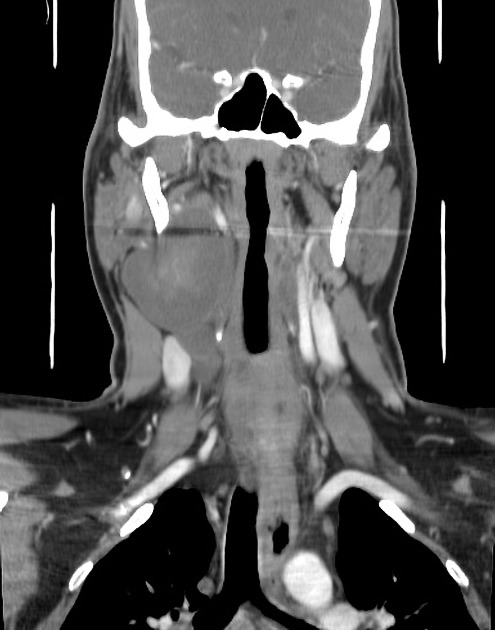Musculus levator claviculae





The levator claviculae or cleidocervical muscle is an uncommon accessory muscle in the neck that may be mistaken for a neck mass.
Summary
- origin: transverse process of upper cervical vertebra
- insertion: middle or lateral third of the clavicle
- innervation: branches of the cervical plexus
- action: clavicle elevation and lateral neck flexion
Gross anatomy
Origin
The origin is usually from the anterior aspect of the transverse process of the upper cervical vertebrae. The specific level of origin reported has varied from C1 through C6 .
Insertion
The insertion is usually the middle or lateral third of the clavicle. Insertion onto the medial aspect of the clavicle is less common .
Relations
- posterior to the sternocleidomastoid muscle
- lateral to the anterior/middle/posterior scalene and levator scapulae muscles
- courses within the posterior triangle of the neck
- sometimes blends with the trapezius muscle
Innervation
Descriptions of the innervation vary but in general are thought to derive from branches of the cervical plexus that arise from C2, C3, and/or C4 nerves .
Action
Based on the muscle attachments, the action is commonly thought to involve elevation of the clavicle and lateral flexion of the neck . Speculative purposes include serving as an accessory muscle for respiration and acting synergistically with the trapezius and serratus anterior for raising the arm higher than the shoulder .
Radiographic features
CT
The origin of the levator claviculae is obscured by the belly of the longus capitis muscle . It may be seen at and below the level of C3, coursing inferiorly and laterally, initially between the scalene and sternocleidomastoid muscles, then posterior and lateral to the sternocleidomastoid, toward the lateral half of the clavicle. In short-axis, the muscle measures up to 11 mm . It may be found unilaterally or bilaterally; when unilateral, it may be more common on the left .
Development
The embryogenesis of the levator claviculae is controversial, with different authors variously hypothesizing a shared myotome with the levator scapulae, sternocleidomastoid, trapezius, anterior scalene, and longus colli muscles .
Related pathology
The muscle is a normal variant and should not be mistaken for a mass or cervical lymphadenopathy .
Thoracic outlet syndrome due a hypertrophied levator claviculae has been described .
Siehe auch:

 Assoziationen und Differentialdiagnosen zu Musculus levator claviculae:
Assoziationen und Differentialdiagnosen zu Musculus levator claviculae: nicht verwechseln mit:
nicht verwechseln mit: 


